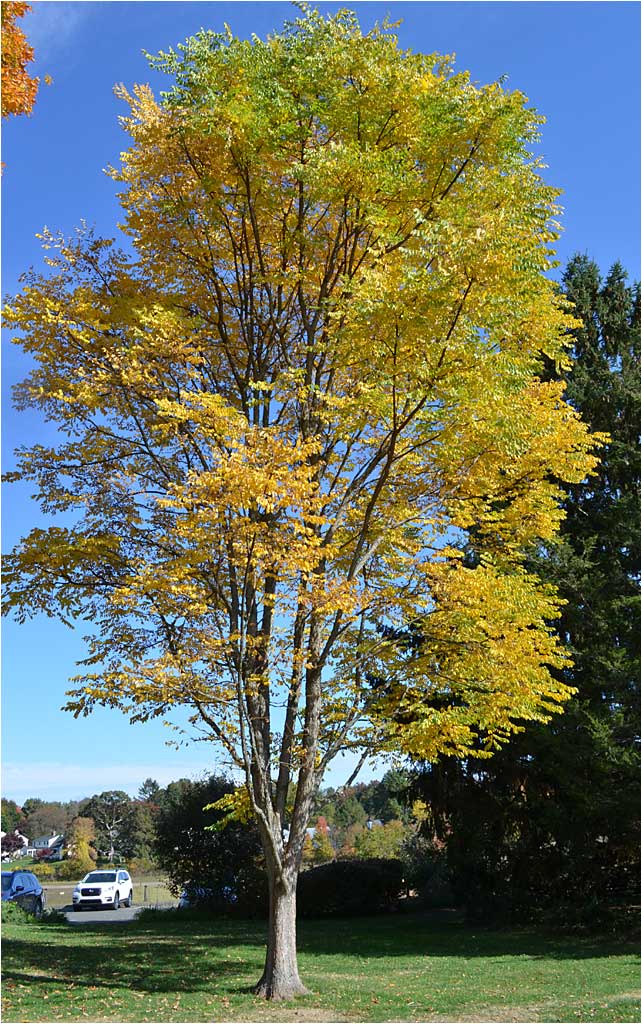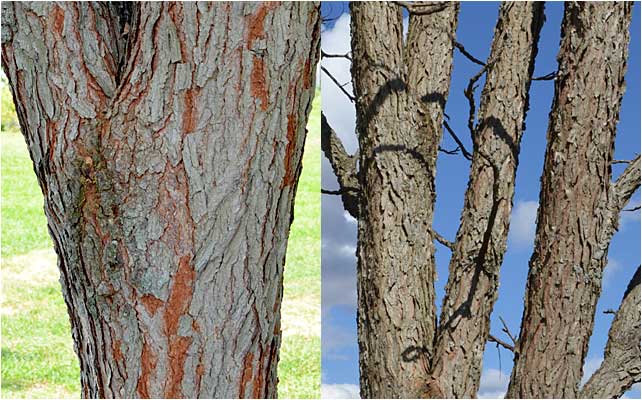21. KENTUCKY COFFEE TREE
Gymnocladus dioicus

In mid-Spring, a tad later than other trees at the Arboretum, the Kentucky Coffee Tree begins to leaf out. It also drops its leaves in fall fairly early, so it spends 5-6 months of the year without leaves. It is considered a rare tree, although it has a wide range it can live. It is also a dioecious tree (M/F flowers on different trees) and this specimen is male.
SPRING, LEAF AND FLOWER

Every year, the emerging foliage is quite colorful with new shoots bearing reddish tints before assuming their summer green. Look a bit closer and you can see early clusters of flower buds mixed in with the emerging leaves.
SPRING FLOWERS

In late spring and early summer, the flower buds grow and eventually yield small whitish-green flowers. All the flowers on this tree will be male.
SUMMER

Full summer foliage for Gymnocladus dioicus, the Kentucky Coffee Tree. Even in the big photo, you can see this tree has unusual leaves, and it does. The Black Walnut tree has these types of leaves - called compound leaves. Compound leaves mean that each "LEAF" is composed of many leaflets attached to a single stem. The Coffee Tree (also a member of the legume family) takes it a step further...
BIPINNATE COMPOUND LEAF

The actual "LEAF" is the entire stem and all of the branchlets attached to it. So a "LEAF" may be up to 3 ft. long and have 100 leaflets or more. What makes the Coffee Tree so unusual is that the compound leaflets are joined to the main stem from each side. Hence, bipinnate compound. Honey Locust also has a bipinnate compound leaf structure.
FALL FOLIAGE

At The Westmoor Arboretum, the Kentucky Coffee tree turns a brilliant yellow in mid - to - late October, and then quickly drops its leaves.
WINTER

The Kentucky Coffee Tree has a tall, slender profile - called a "habit" in the tree world. The bark of the Coffee Tree is also very distinctive. At first it resembles the bark of Black Cherry, but a closer look reveals it is rougher than the bark of Black Cherry...
BARK, 4 SEASONS

The upper bark scales, but not as heavily as Shagbark Hickory. The lower bark also exfoliates, showing patches of the reddish inner bark. All in a day's work for the Kentucky Coffee Tree, a rare and unusual tree at the Westmoor Arboretum.